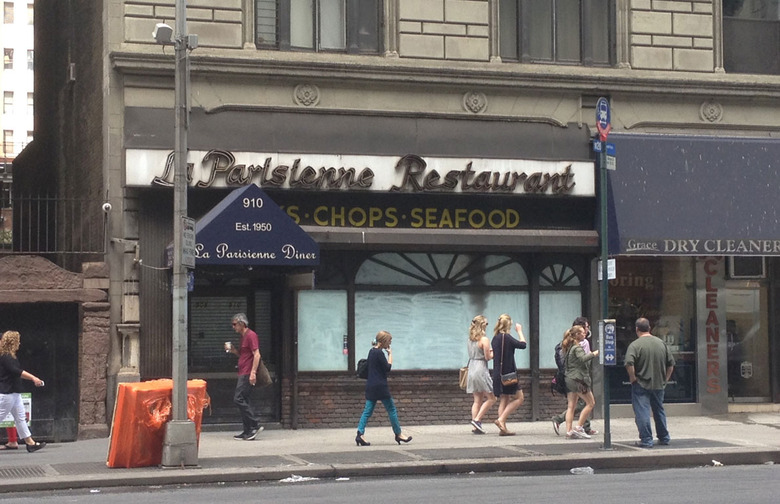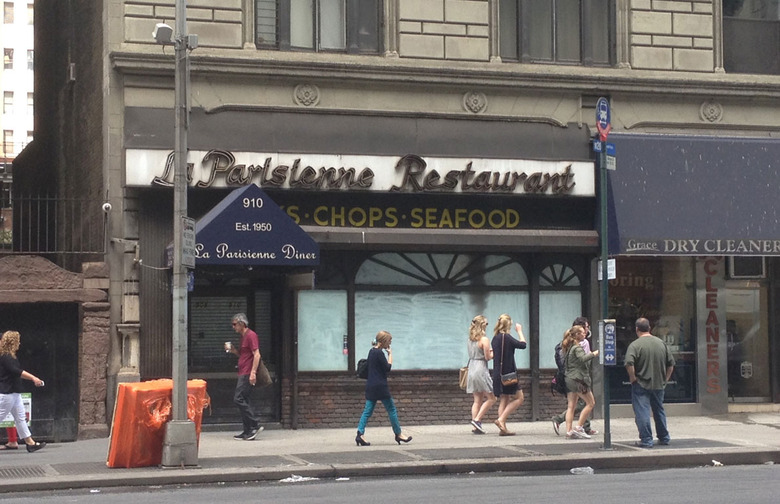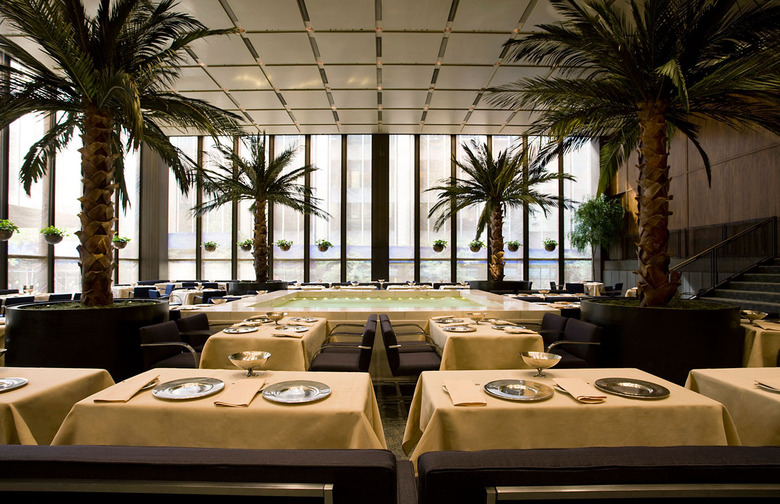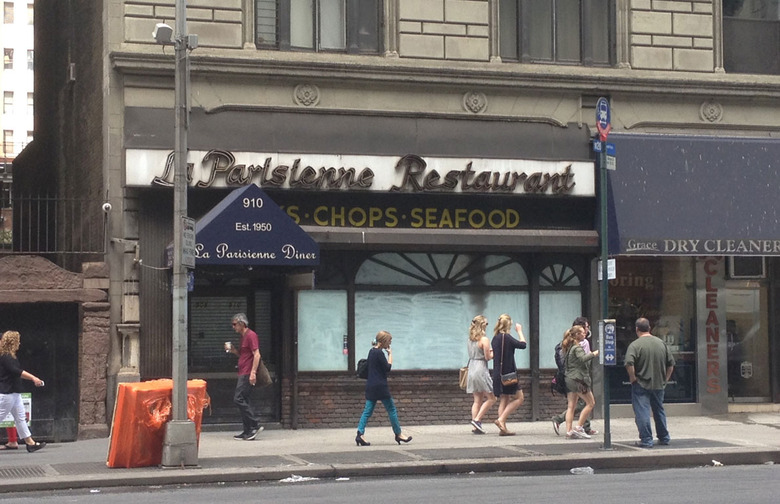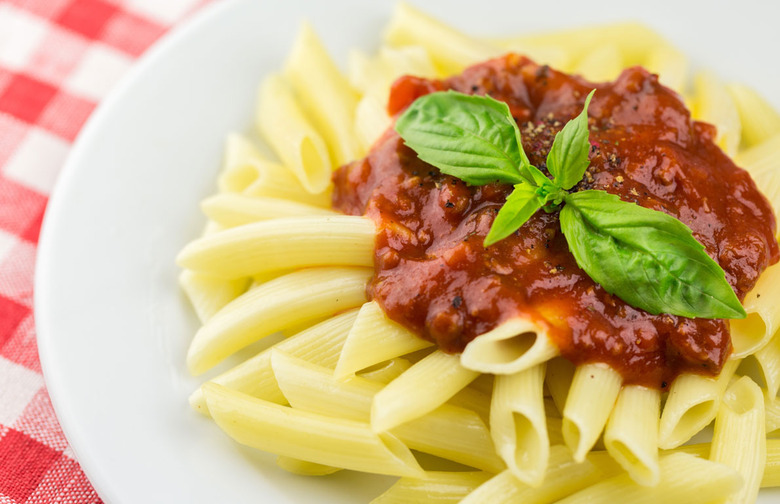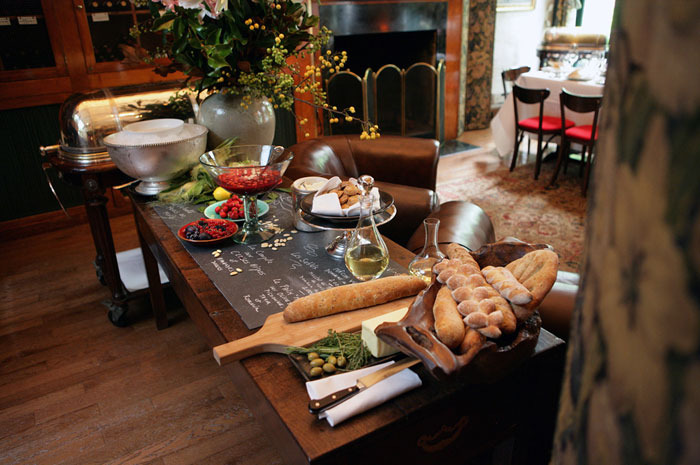Fancy French? Homey Delis? Red-Sauce Italian Joints? Say Goodbye To All Of These And More
Fancy French? Homey Delis? Red-Sauce Italian Joints? Say Goodbye to All of These and More
We all know that nothing lasts forever. This is especially true when it comes to restaurants. It's estimated that about 60 percent of all restaurants go out of business within three years of opening, and the majority of those close within their first year, for a wide variety of reasons. But it's not just individual restaurants that close; entire styles of dining fade from popularity. These are eight types of restaurants that are in danger of being lost forever.
Continental
"Continental" cuisine, heavily influenced by European fine dining and dependent on imported ingredients, was once the de rigueur style of dining for those looking for a nice evening out or to entertain a client. But this expensive style of dining is on its way out; even the high temple of Continental cuisine, New York's Four Seasons, is facing some serious troubles.
Jewish Delicatessens
The delicatessen is a truly American style of dining, hugely influenced by Eastern European fare and perfected by Jewish immigrants in the early twentieth century. But even the great torchbearers like Katz's Deli are finding it difficult to keep up with the changing times: heavy fare like chopped liver, pastrami, and knishes doesn't jibe with the health-conscious, and the increasing price of beef is hurting their bottom line.
Lunch Counters
Lunch counters, small slivers of restaurants where workers could quickly grab a sandwich or a bowl of soup before heading back to the office, were ubiquitous in just about every American downtown through most of the twentieth century. But this truly old-fashioned style of dining, reliant on simple, hearty, no-frills fare, is quickly fading. While the ones that remain have become beloved neighborhood institutions, their inexpensive prices, combined with workers choosing to take their lunches elsewhere (or just eat it at their desk), has opened the door for landlords to force them out, which is what recently happened to New York's beloved Stage Restaurant.
Neighborhood Diners/Coffee Shops
Another bastion of inexpensive dining, neighborhood diners/coffee shops, are on their way out as well. These no-frills restaurants, with their counters, deep booths, and refrigerators full of rotating cakes, are a dying breed, and are also forced to close because of changing tastes and increasing rents. Diners who relished a place to linger over a Monte Cristo sandwich or a piece of pie and cup of coffee are now looking for trendier options, prompting restaurants like Midtown New York's La Parisienne to close after 64 years in business.
Neighborhood French
Little French bistros were once an ideal location for a fancy night out, with white tablecloths, snooty waiters, and a menu that you knew would have all the classics, like trout amandine, boeuf bourguignon, and coq au vin. But changing tastes drove crowds elsewhere, and the remaining ones are quickly dying off. If you're looking to experience this old-school style of dining in New York City, a precious few places remain, like Chez Napoléon, La Bonne Soupe, and La Ripaille.
Railcar Diners
Scattered throughout the country are a handful of narrow stainless-steel diners that very closely resemble railcars (some of them literally were, originally). Once ubiquitous (especially in the Northeast), these prefabricated restaurants, descendants of the lunch wagon, could very easily be built and set up. They were generally open 24/7, and they've certainly entered American lore. Unfortunately, they're quickly fading away, and the remaining ones are true relics of an earlier era.
Red-Sauce Italian Restaurants
Italian restaurants are still ubiquitous throughout America, but the traditional checkered-tablecloth- fiasco-of-Chianti-marinara-sauce-style restaurants are becoming fewer and farther between. The reason? The genre is simply played out. By now, most people know that chicken parm, spaghetti and meatballs, and lasagna aren't real Italian food, and lots of restaurants have opened up that serve Italian fare that you'd actually find in Italy (it's worth noting that much of this shift was spearheaded by the cooking shows and restaurants of Mario Batali). Today, the only crowds heading to red-sauce Italian spots are doing so ironically, like at the incredibly overpriced and perpetually packed Carbone in New York City.
Supper Clubs
Once upon a time, classy couples looking for a fun evening put on their finest evening wear and headed to a supper club or the ballroom of a hotel, where "dinner and dancing," typically to the strains of a big band, was the main attraction. For a high price (for the time), they'd be treated to a sumptuous meal and performances by some of the most well-known acts of the era, like Glenn Miller, Tommy Dorsey, and Artie Shaw. Needless to say, this very old-fashioned form of entertainment began to decline as soon as the big band era did, but there's still something incredibly classy about reliving that experience. You can do so at the recently reopened Rainbow Room in New York City's Rockefeller Center, but, unfortunately, that's one of just a handful of places across the country where the supper club experience is still offered. We must admit that it's a much classier way to spend an evening than modern-day nightclubs.
Upscale French
During the 1950s through the early 1990s, eating a lavishly expensive meal meant dining at a French restaurant. Le Pavillon, La Côte Basque, and Caravelle in New York City; The Blue Fox and La Bourgogne in San Francisco; La Maisonette in Cincinnati; and Le Perroquet in Chicago were just a few examples of these extraordinarily upscale restaurants, all of them reserved for deep-pocketed high society. Today, those looking to spend thousands of dollars on dinner have ample non-French (albeit French-influenced) options at restaurants like Per Se and Eleven Madison Park. There's only one of the old-time super high-end French restaurants, Le Grenouille, left in New York, though comparatively newer gastronomic shrines like Daniel and Jean Georges maintain the standards. Restaurants like these pretty much exist in America today only in New York, however.
